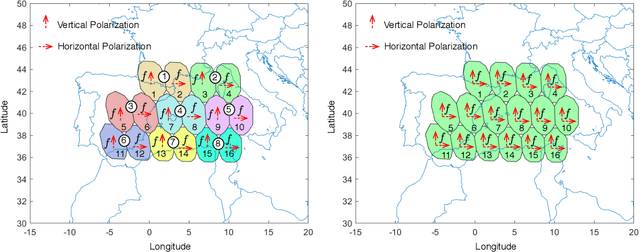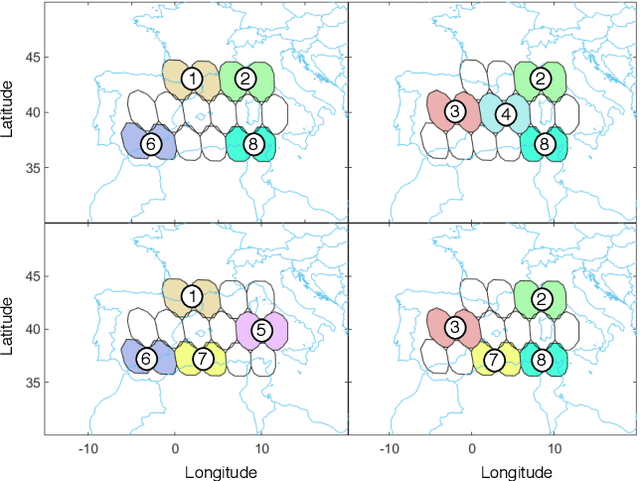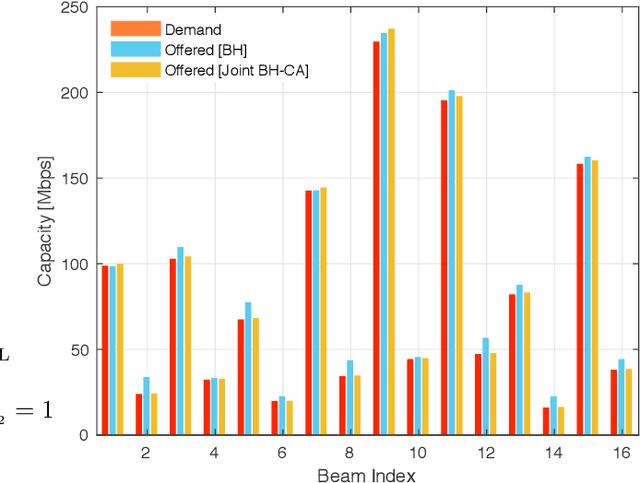Joint Beam Hopping and Carrier Aggregation in High Throughput Multi-Beam Satellite Systems
Paper and Code
Jun 24, 2022



Beam hopping (BH) and carrier aggregation (CA) are two promising technologies for the next generation satellite communication systems to achieve several orders of magnitude increase in system capacity and to significantly improve the spectral efficiency. While BH allows a great flexibility in adapting the offered capacity to the heterogeneous demand, CA further enhances the user quality-of-service (QoS) by allowing it to pool resources from multiple adjacent beams. In this paper, we consider a multi-beam high throughput satellite (HTS) system that employs BH in conjunction with CA to capitalize on the mutual interplay between both techniques. Particularly, an innovative joint BH-CA scheme is proposed and analyzed in this work to utilize their individual competencies. This includes designing an efficient joint time-space beam illumination pattern for BH and multi-user aggregation strategy for CA. Through this, user-carrier assignment, transponder filling-rates, beams hopping pattern, and illumination duration are all simultaneously optimized by formulating a joint optimization problem as a multi-objective mixed integer linear programming problem (MINLP). Simulation results are provided to corroborate our analysis, demonstrate the design tradeoffs, and point out the potentials of the proposed joint BH-CA concept. Advantages of our BH-CA scheme versus the conventional BH method without employing CA are investigated and presented under the same system circumstances.
 Add to Chrome
Add to Chrome Add to Firefox
Add to Firefox Add to Edge
Add to Edge